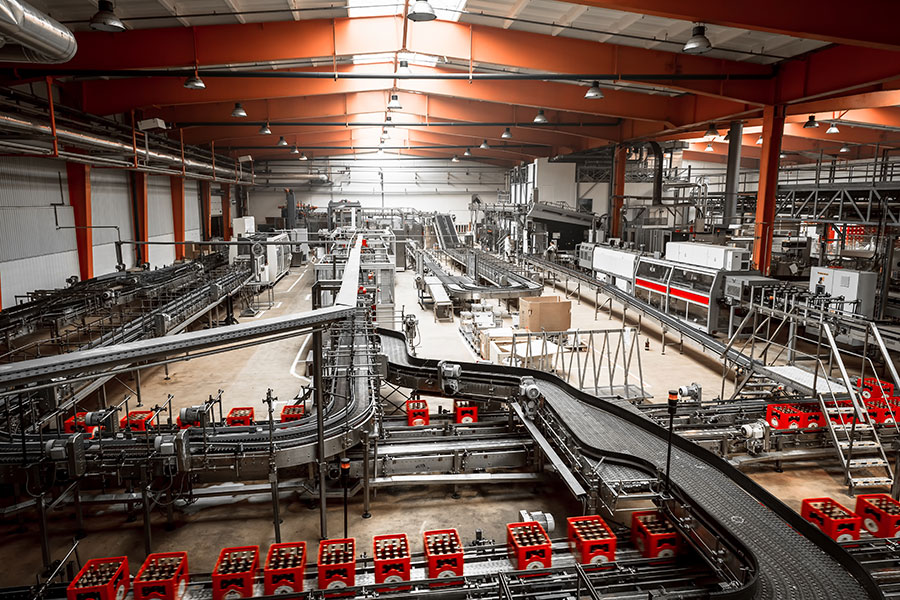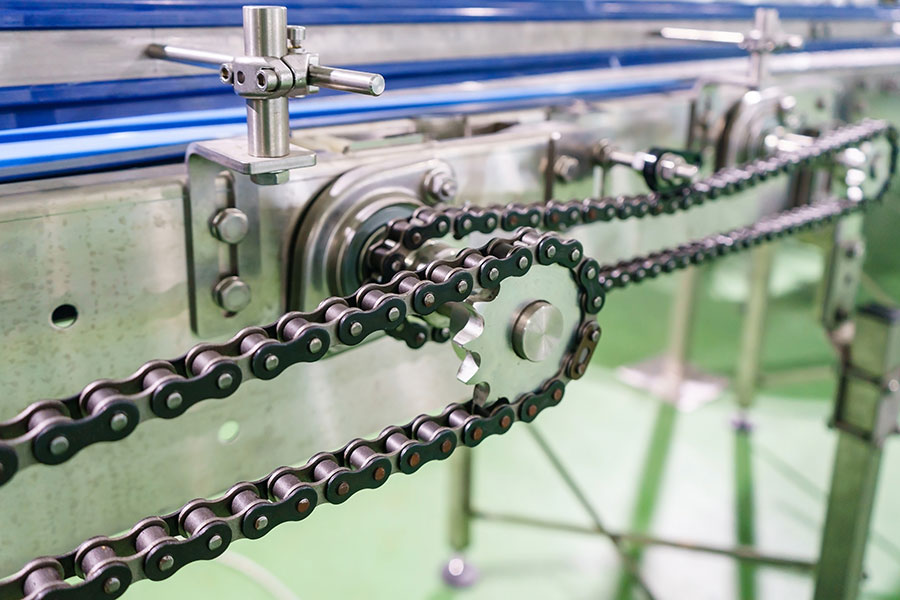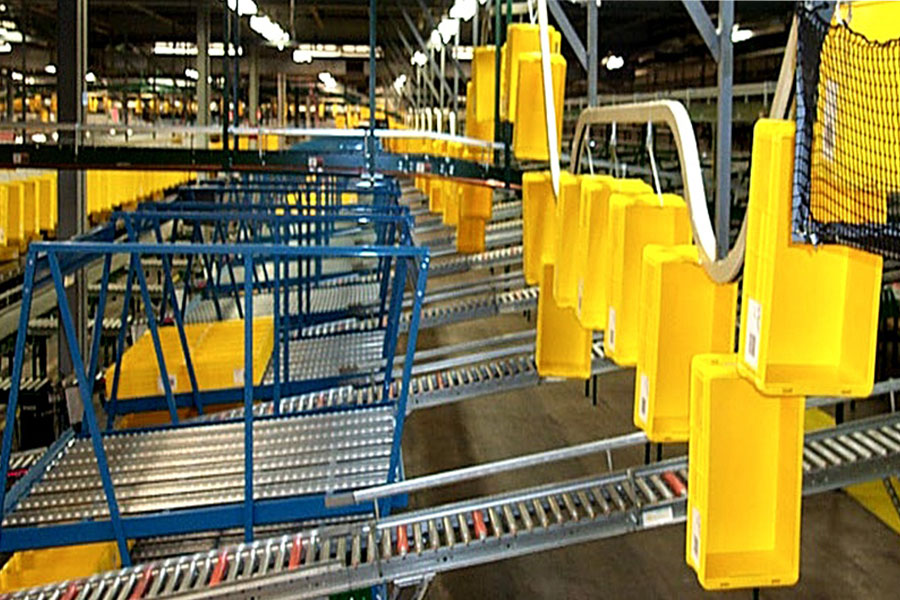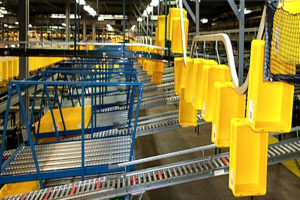In any industry of mass production, efficiency and durability are of utmost importance. To those looking from the outside-in, the manufacturing space is more complex than many imagine. Harvard Business Review illustrates this well: “Most Americans believe factory work is mechanical, snapping together plastic parts or assembling electronic devices. No thinking required; just put in these four screws 2,400 times a day… Many of the jobs in the most advanced semiconductor-manufacturing plants are as complex as a lunar-landing mission… Producing biologics involves enough biochemistry, chemical engineering, and cell biology to make a graduate student wince.”
Manufacturers exploring efficiency from the inside-out understand that high-quality, reliable equipment – from conveyor systems to conveyor chain – is crucial. Purchasing high-quality, excellent systems is absolutely worth the investment. Below, we explore a few of the many benefits high-performance conveyor chains provide any operation.
High-Performance Conveyor Chain is Durable
As the name implies, a high-performance conveyor chain performs excellently in a variety of harsh, demanding environments, including those with long runs and sharp turns. A high-performance chain is built to function reliably every time for a long time. In The Competitive Edge: Research Priorities for U.S. Manufacturing, the importance of making substantial investments for reliable equipment is insightfully discussed:
Substantial capital investments, in the form of facilities and equipment, are required for manufacturing almost all goods of economic significance. The productivity of these investments is a fundamental element of competition among companies and nations. Events that slow or interrupt the manufacturing process or degrade the product impair the competitiveness of a manufacturing enterprise. The term equipment reliability and maintenance (ERM) encompasses not only equipment, such as machines, tools, and fixtures, but also the technical, operational, and management activities, ranging from equipment specifications to daily operation and maintenance, required to sustain the performance of manufacturing equipment throughout its useful life.
High-Performance Conveyor Chain is Versatile
A high-performance conveyor chain is suitable for use in multiple types of overhead conveyor applications, both heavy duty and lighter systems. A high-performance chain can be implemented in OveR-Way, patented Twin-Track, and lighter systems using Zig-Zag or Inverted Paintline. A high-performance conveyor chain is both versatile and consistent, enhancing each overhead application explored briefly below with reliability:
OveR-Way Heavy-Duty Over and Under Conveyor
This system is the ideal solution for paint finishing applications, WIP buffer & retrieval, assembly line systems, and long load handling. The OveR-Way Conveyor utilizes the same components as every Richards-Wilcox chain conveyor – trustworthy and reliable. OveR-Way conveyor systems are built to withstand the rigor of a variety of applications; utilizing a high-performance conveyor chain, these systems can also endure rigorous environments. OveR-Way systems boast impressive lifting capacity. Single Over-way carriers support loads up to 1,000 pounds, while Tandem carriers hoist up to 2,000 pounds. Using OveR-Way Heavy-Duty conveyor systems and a high-performance chain, equipment can do all the heavy lifting.
Twin-Trak Side-By-Side Conveyor
Strengthened with a high-performance conveyor chain, Twin-Trak systems bring unlimited power to limited spaces, designed for paint finishing systems, WIP buffer storage & retrieval, progressive assembly, extrusion material handling, and typical curing applications. Twin-Trak systems stand apart due to the ease of switching into and out of the main line of travel with greater frequency than other power and free conveyor designs.
Zig-Zag Enclosed Track Conveyor
The Zig-Zag system is the result of a century of innovation, an effective, efficient system. This conveyor utilizes standard components built for long life. The Zig-Zag conveyor is simple and modular, and easily installed in a wide variety of locations, including manufacturing floors, auto-body shops, receiving areas, etc. Thus, the list of potential applications is nearly endless. A few include paint finishing systems, WIP buffer systems, investment casting, progressive assembly, trash conveyors, tote handling, die cast rack storage, empty carton return, planting rack storage, silver can delivery, and robotic interface.
Richards-Wilcox Conveyor High-Performance Conveyor Chain
Richards-Wilcox Conveyor’s high-performance conveyor chain is designed with countless benefits in mind. A unique caged bearing design is one such customization that changes the nature of a conveyor chain. The bearing design results in longer chain life, smoother operation, quieter operation, less downtime, and greater reliability. When used with inverted track or specialty carriers, e-Chain is an excellent option. e-Chain can be utilized for clean applications, when sanitation is prioritized, such as merchandise distribution and fulfillment.
Furthermore, Richards-Wilcox Conveyor’s high-performance conveyor chain is made with high-quality components, resulting in lower replacement frequency. Reduced system drag increases system life. The chain is more ergonomic and easier on manufacturers and plant workers. The system demands less expensive maintenance and, ultimately, lower total system costs.
The system is built to improve efficiencies, lower overhead cost, and provide reliability for your operation. Below, we explore how Richards-Wilcox Conveyor’s equipment has impacted real companies.
Case Study
Premier Citrus Packers
Major international fruit producer, Premier Citrus Packers handle 2 million boxes of produce annually. Essentially, the market depends on them. The plant contacted Richards-Wilcox Conveyor with an old, outdated conveyor system that caused problems. Neither the Florida-based fruit plant nor the global market could afford the downtime caused by an inefficient conveyor operation. Grocery chains globally relied on Premier Citrus Packers distribution, packaged under a wide variety of private labels.
The Premier Citrus Packers line relies on both an overhead system and a belt conveyor. The overhead system supplies boxes to line workers, while the belt conveyor delivers fruit to packing stations. For the entire facility to operate, both conveyors must be properly working. When the Packers contacted Richards-Wilcox, both conveyors were worn-out – the system broke down constantly.
Utilizing Richards-Wilcox Conveyor systems, Premier Citrus Packers can depend on their equipment. The conveyor is built to last, stronger, more adaptable, and ready for the future. The international fruit producers now experience less downtime, higher productivity, and greater yield.
Richards-Wilcox Conveyor
Richards-Wilcox Conveyor builds conveyor systems engineered for evolution. Our systems are flexible, modular, and designed to keep pace with the radically changing world. We help industries keep on track for the future. If you are interested in upgrading your efficiency and durability, get in touch today at (888) 852-1020 or via our online contact form.



